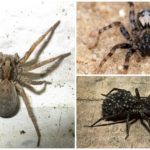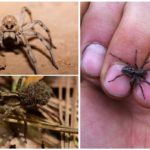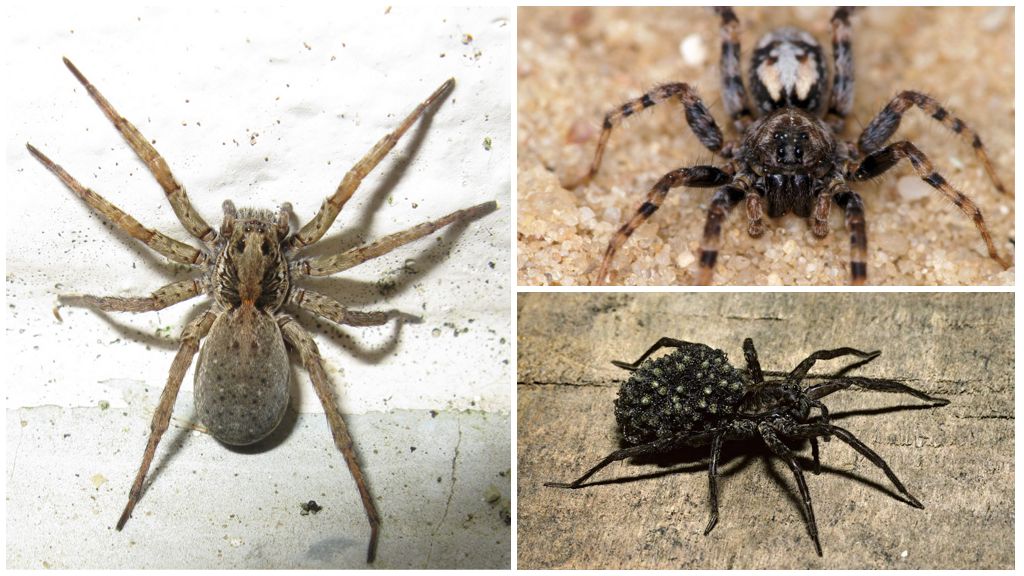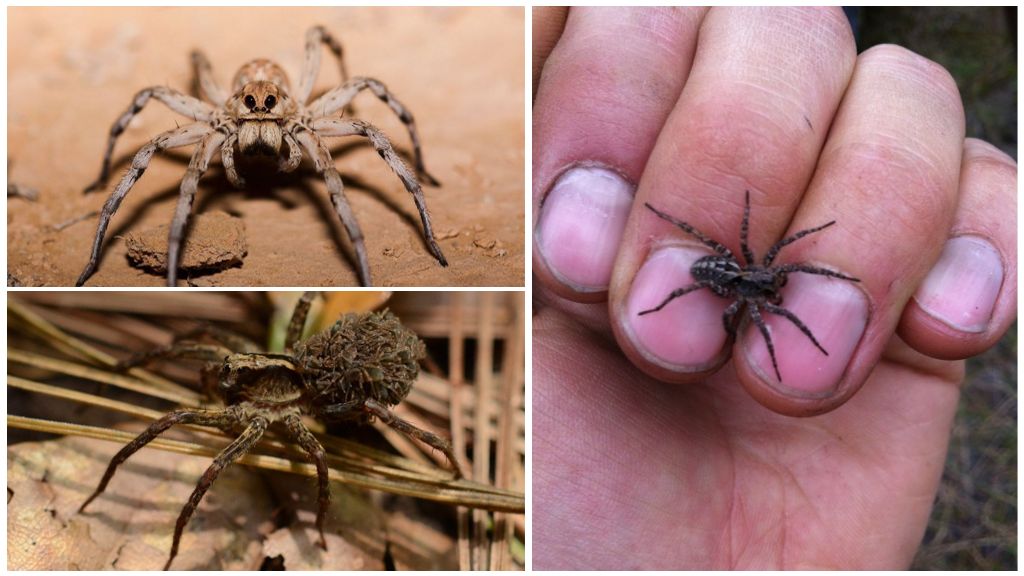Wolf spiders
Content
- Wolf spiders
- Wolf spiders
Spider wolves got their name for habits, similar to the behavior of these wolves. Representatives of this family of large arthropods are nocturnal and hunt without the help of cobwebs, driving their prey. The family has nearly 2.5 thousand species. These arthropods do not live only in ice. They have no one to catch there. Even in Greenland there are spiders from the family Lycosidae, but only on a relatively warm coast, where you can find soil and insects.
Family description
Spiders wolves are large arthropods that do not build cobwebs. Some species reach a size of more than 3 cm. The representatives of the family primitive body structure. All internal organs are located in the large abdomen. The share of the head of the head fell functions:
- view;
- movement;
- breathing;
- touch.
And wolf spiders eat it.
Body structure
All species of the family are night hunters. Because of this, "wolves" have well-developed eyesight. The eye on the cephalothorax is usually 4 pairs, which are arranged in 3 rows:
- lower - 4 small eyes;
- medium - 2 very large eyes;
- upper - 2 medium sized eyes.
Big eyes are adapted for night hunting. Sensory hairs located on the paws and the body are responsible for the touch of the "wolves".
On a note!
Eyes glow at night in artificial light and the animal can be detected with a flashlight.
Paws of representatives of the family of medium length, but thick and powerful. They provide animals not only the opportunity to run, but also to jump. Spiders wolf jumps are not as far and high as horse spiders. "Wolves" need only be able to catch prey.
The spider glands all these arthropods are used to interweave the walls of their lair.As trapping networks their web does not apply. Females are wrapped in a spider web cocoon. Cocoon they carry with them. To prevent the cocoon from dragging on the ground, the spider holds its abdomen elevated.
Interesting!
A female carrying a cocoon is able to hunt independently.
The Lycosidae family does not have any protective mechanisms against enemies, except for a protective coloration. The photo of wolf spiders clearly shows that their main color is gray. There are types of brown or black. There may be individuals with a light color. But this is either a young spider after molting, or a cave species, where the color does not matter.
Interesting!
The cave spider Kaya not only has a light color, but also completely lost its eyes.
Differences male from female
In wolf spiders, sexual dimorphism is developed, but “in the opposite direction.” In animals, usually males are larger and stronger than females. There are few species where the inverse relationship. Spiders are wolves of such exceptions. The male is smaller, with a darker color, but well-developed pedipalps. The best development of the pedipalps in males is explained by the fact that the male spiders have reproductive organs on these limbs.
Breeding process
Tropical species are able to mate throughout the year. The inhabitants of temperate latitudes begin the process of reproduction in the summer. The initiative shows a male. Having found a female, he lifts up the third pair of legs and, shaking them, approaches the spider. If that applicant suits, she folds her paws and lays down, allowing the male to climb onto his back. To make it easier for males to mate, the spider raises its abdomen.
On a note!
After mating, the spider finds shelter and weaves a cocoon for eggs. Having laid the eggs, the female braids the cocoon with several more layers of cobweb and attaches it to the spinning organs.
Like the namesake mammals, wolf spiders take care of their offspring. A few weeks after laying, young offspring hatch. The spider gnaws the cocoon and helps the cubs get out into the wild. After hatching, the spider female drags them on herself. On one individual there can be 40-100 kids. The quantity depends on the type of spider and its size.
Interesting!
The maximum number of spiders are carried on themselves by females of the genus Tarantulas.
Lifespan
The lifespan of wolf spiders depends on their size. Representatives of small species live for about six months.Large spiders can live longer than 2 years. Males do not survive the first year. Spiders and fertilized females go into hibernation.
Habitat
In the dry steppes lives one of the largest genera of the family - tarantulas. Most wolf spiders prefer places with high humidity. Such places are forests near water bodies. You can detect wolf spiders:
- under the stones;
- in the bushes;
- in the meadows;
- in fallen leaves.
For shelter, arthropods of this family prefer fallen leaves and forest floor, which is always abundant near water.
On a note!
The lifestyles, photos and descriptions of wolf spiders are almost the same as those of the other family - the more poisonous hermit spiders.
Because of this, “wolves” are often killed, although for humans they are practically harmless and in nature function as stabilizers of the number of invertebrates.
Nutrition
Among the family there are sedentary species living in burrows and stray. But they all lead an active hunt for beetles, their larvae and other flightless insects. Will not refuse to eat a fly, if you can catch it. Bird species can hunt not only at night, but also during the day.But in the afternoon they only grab the prey, which itself runs past the mink.
Interesting!
The prey representatives of this family are grabbed in the jump. Before jumping, the arthropod attaches a spider's web to the place from which it will jump. Thus, the animal insures itself against falling from a branch or from somewhere else.
Danger to humans
Real spiders are all poisonous, otherwise they would not be able to absorb food. But few of them are dangerous for humans. Representatives of the family Lycosidae cause fear for their size and appearance. But wolf spiders are poisonous or not - a relative question. Among them are species of varying degrees of toxicity. It is customary to be afraid of tarantulas, because of which even the tarantella dance appeared, according to legend.
In fact, the toxicity of this family of arthropods living in temperate climates is greatly exaggerated. The bite causes local irritation, characterized by brief pain, itching and redness.
Tropical species are more dangerous. Their bites cause:
- edema;
- prolonged pain;
- dizziness;
- nausea;
- rapid pulse.
The bite is also not fatal, but to alleviate the consequences it is worth contacting a doctor.
Interesting!
Earlier, South American species have been attributed to some fatal bites. Further studies showed that arthropods belonging to other families were responsible for the deaths.









